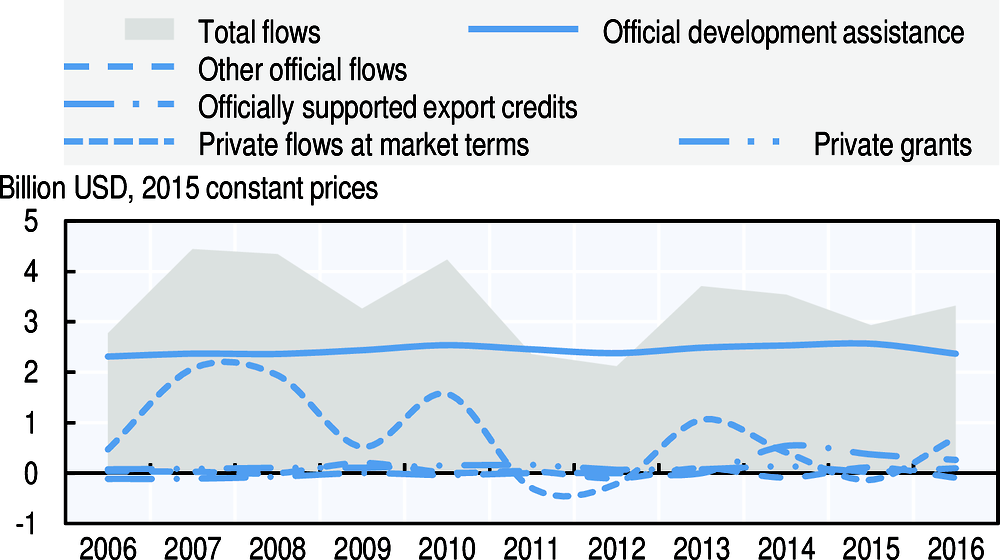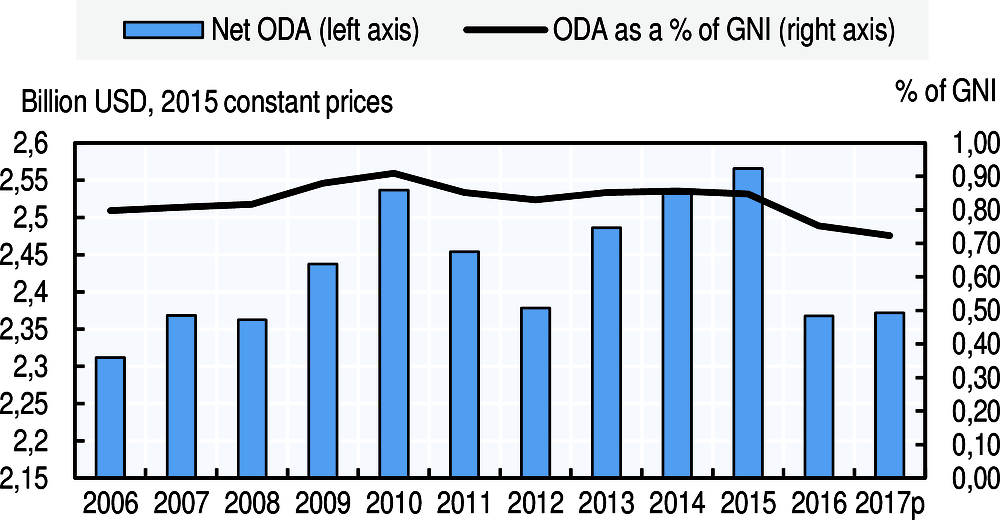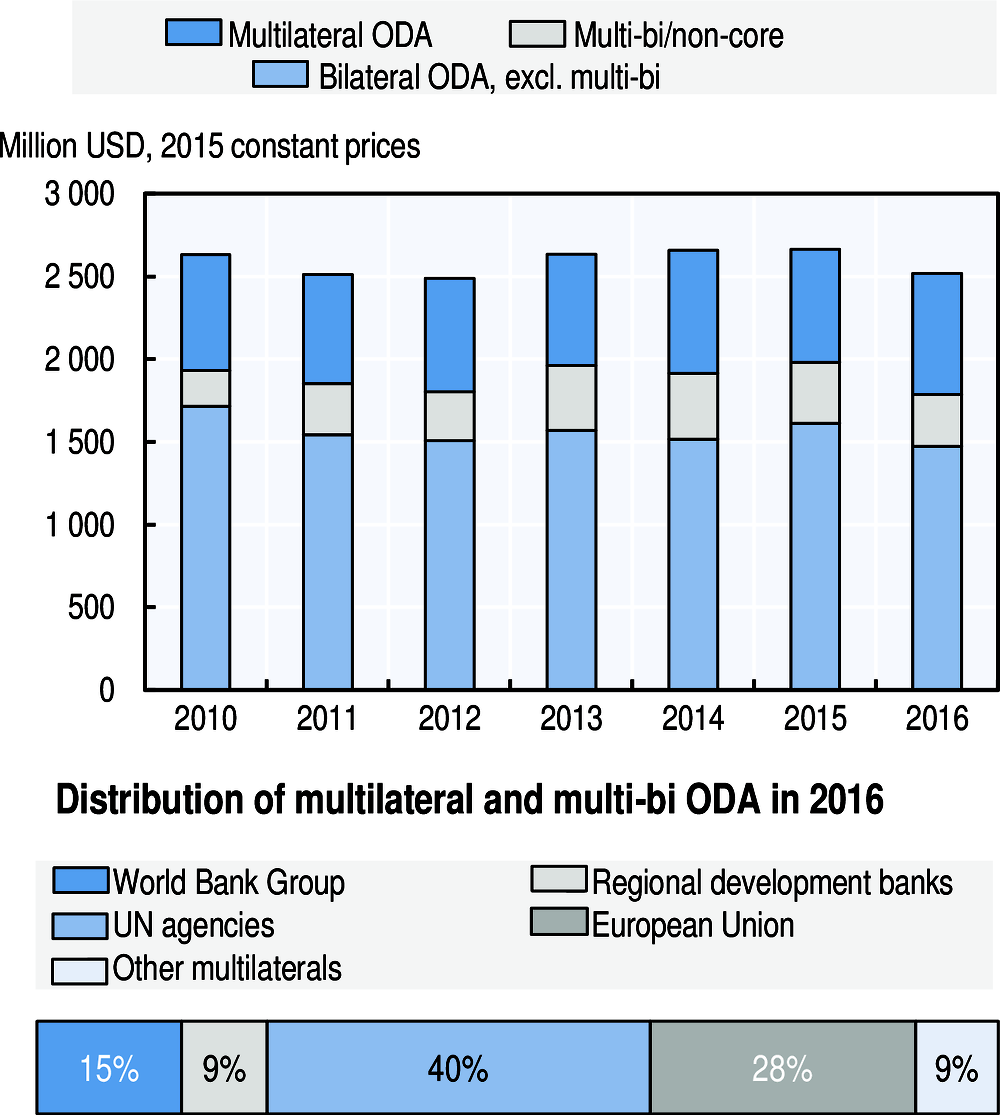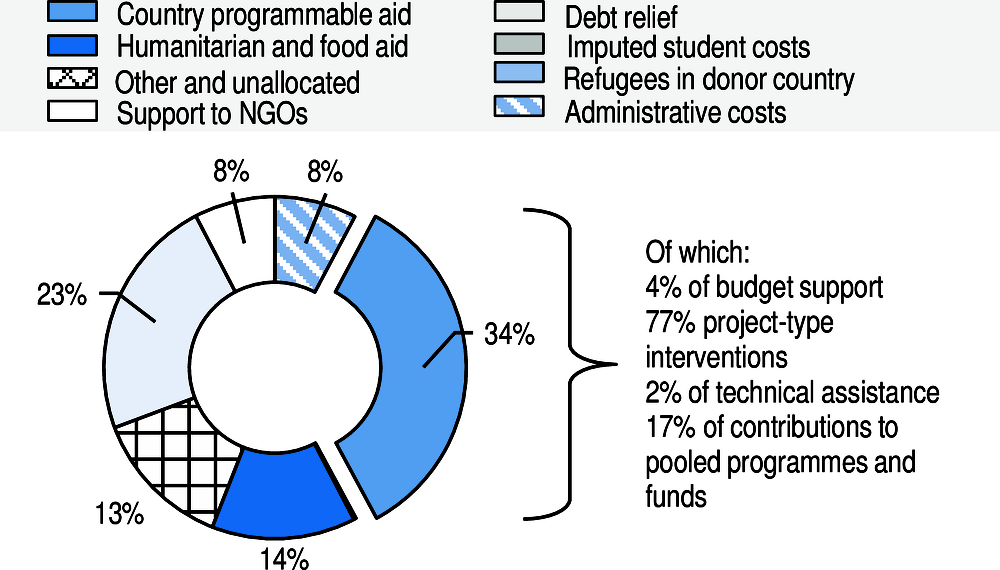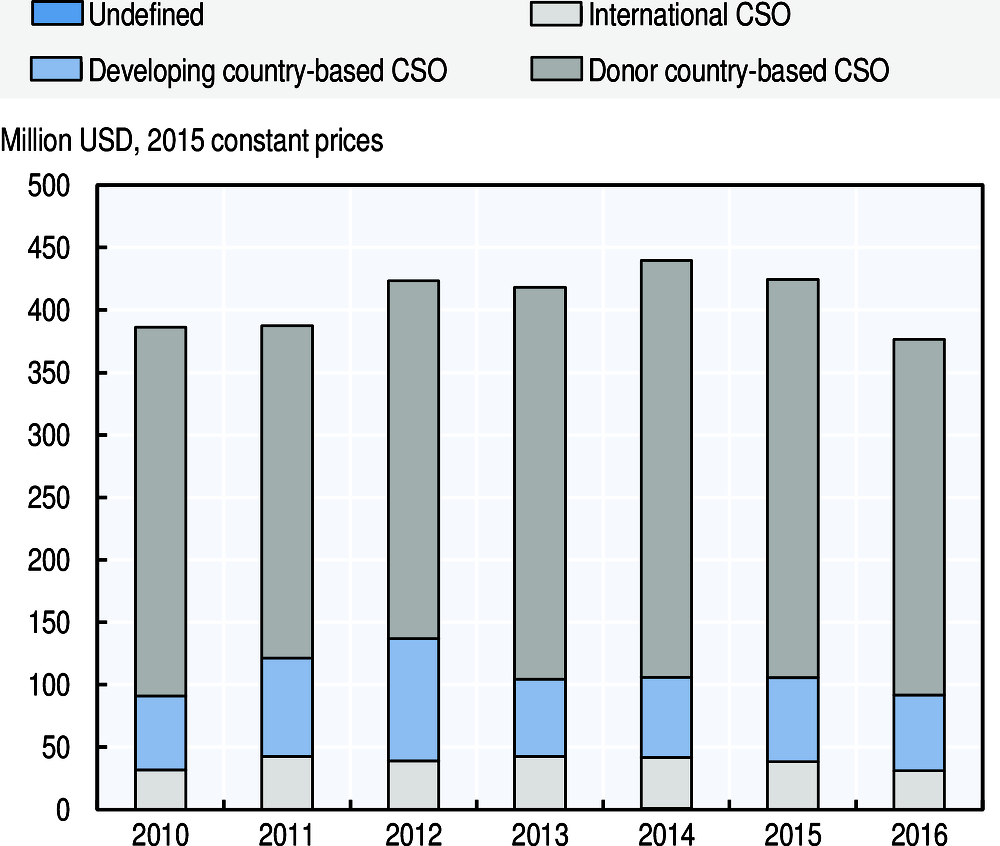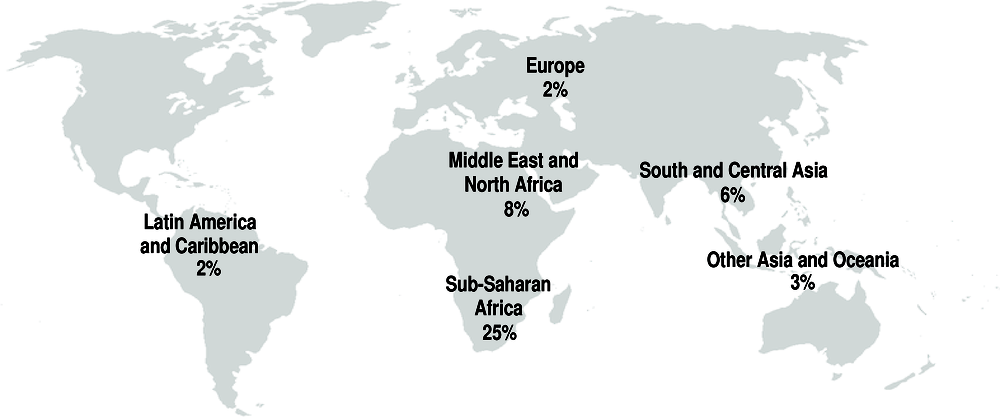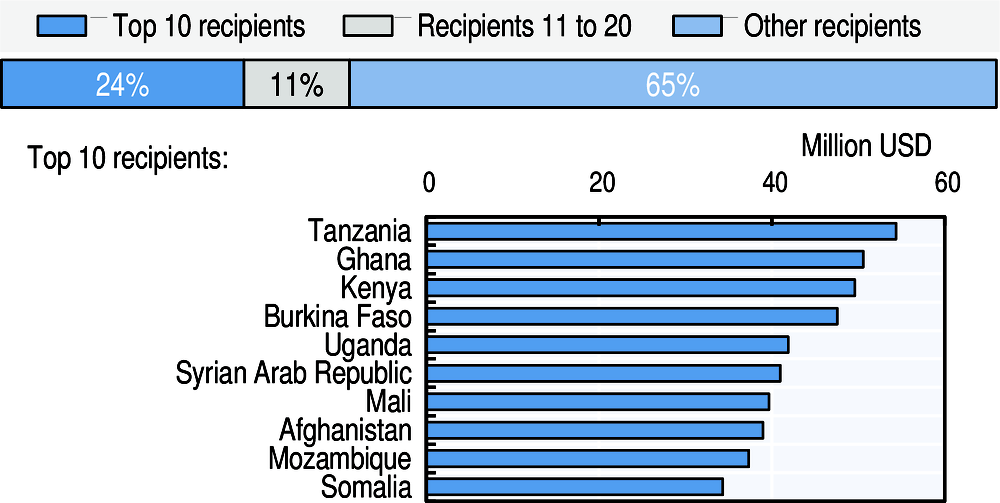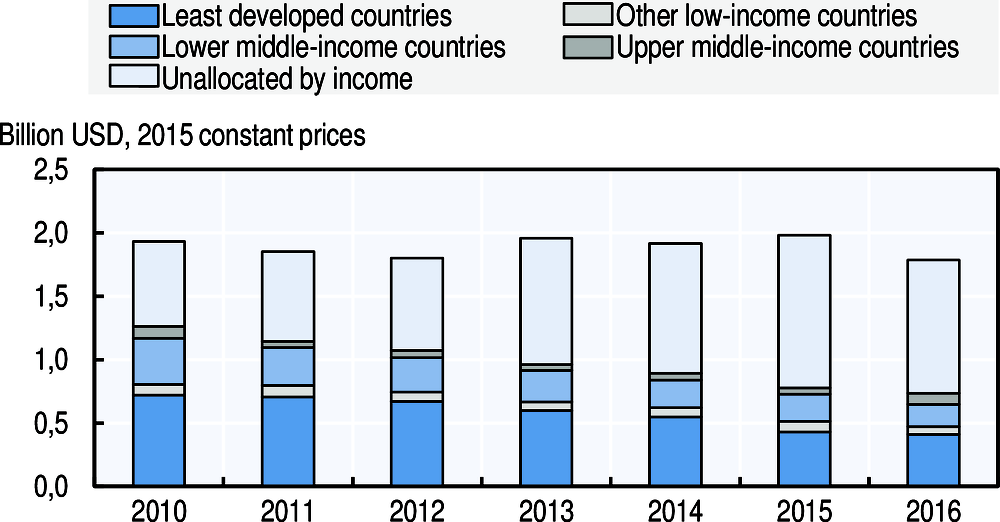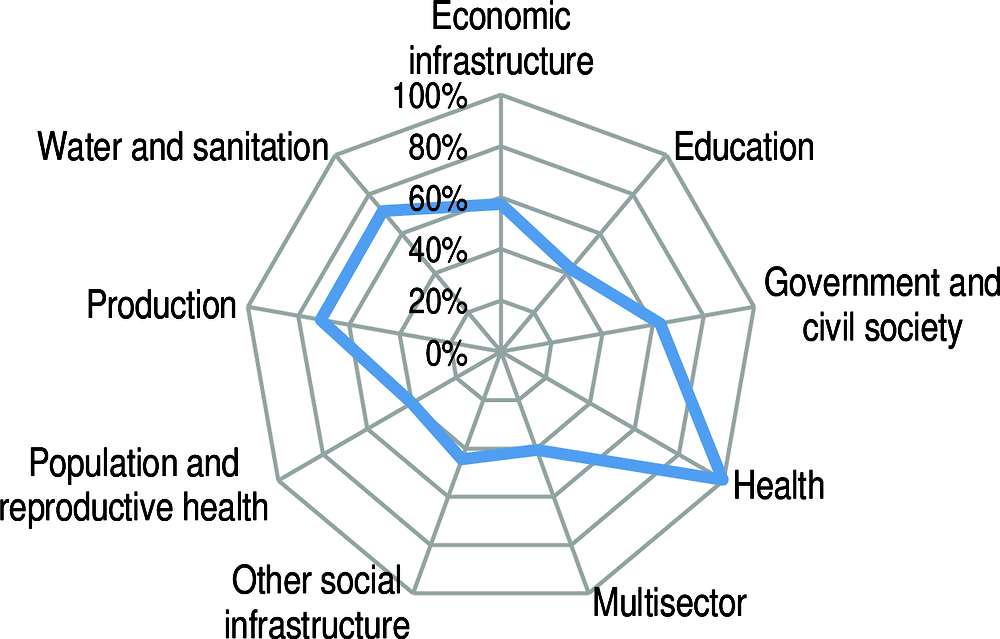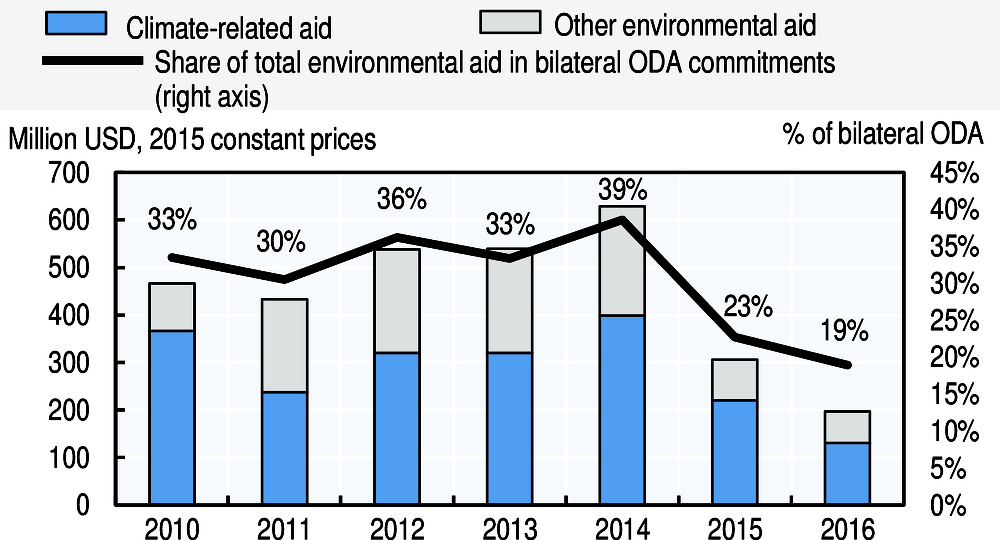Denmark
Leaving no one behind: Denmark’s approach and priorities
Danish development co-operation is committed to the Sustainable Development Goals and “a world in balance without extreme poverty, with sustainable growth and development – financially, socially and environmentally – where no one is left behind.” Denmark sees an important role for official development assistance (ODA) in supporting groups and countries “left behind” because they are not the first to benefit from other types of development finance.
Denmark’s policy seeks to fight poverty and reduce inequality by working to secure equal opportunities for everyone and eliminate discriminatory legislation, policies and practice. It focuses on four priorities – 1) security and development; 2) migration and development; 3) inclusive, sustainable growth; and 4) development. It invests the bulk of ODA in fragile countries and regions where poverty and vulnerability are extensive.
For Denmark, taking a leave no one behind approach helps overcome the Millennium Development Goals’ challenge of unequal progress and can help direct attention to the furthest behind groups. However, measuring progress will be a challenge because of the lack of data about people left behind and need for greater clarity of the concept to guide action.
Denmark finds that its human-rights based approach helps it to fulfil its global obligation of making the Sustainable Development Goals a reality for everyone.
Financial flows from Denmark to developing countries
Denmark’s performance against commitments for effective development co-operation
Denmark’s official development assistance
In 2017, Denmark provided USD 2.4 billion in net ODA (preliminary data), which represented 0.72% of gross national income (GNI), and a 2.3% decrease in real terms from 2016, due to a decrease in in-donor refugee costs. Denmark is one of five Development Assistance Committee (DAC) members having met the UN target of 0.7% ODA/GNI. Denmark’s official development assistance (ODA) is expected to drop to approximately 0.7%, in line with government policy. Budget projections indicate bilateral ODA cuts of 54% and multilateral cuts of 49%. In 2017, in-donor refugee costs were USD 73 million and represented 3% of Denmark’s total net ODA, compared to 17.4% in 2016.
Denmark’s share of untied ODA (excluding administrative costs and in-donor refugee costs) was 99% in 2016 (down from 100% in 2015), compared to the DAC country average of 81.2%. The grant element of total ODA was 100% in 2016. Loans amounted to 2.1% of gross ODA.
In 2016, 70.8% of ODA was provided bilaterally. Denmark allocated 29.2% of total ODA as core contributions to multilateral organisations. In addition, it channelled 17.4% of its bilateral ODA for specific projects implemented by multilateral organisations (multi-bi/non-core).
In 2016, 34.4% of bilateral ODA was programmed with partner countries. Denmark’s share of country programmable aid was lower than the DAC country average (46.8%). Project-type interventions made up 77% of this aid.
In 2016, USD 377 million of bilateral ODA was channelled to and through civil society organisations (CSOs). Denmark channelled 21.1% of its bilateral ODA to and through CSOs in 2016 (remaining stable from 21.4% in 2015).
Bilateral ODA was primarily focused on sub-Saharan Africa. In 2016, Denmark allocated USD 449.4 million to sub-Saharan Africa and USD 130.2 million to the Middle East.
In 2016, 24.4% of bilateral ODA went to Denmark’s top 10 recipients. Nine of the top 10 recipients of Danish aid were priority countries, with the exception being the Syrian Arab Republic. In 2015, Denmark had at total of 22 priority countries which was reduced to 14 in 2016. In 2016, its support to fragile contexts reached USD 558.6 million (31% of gross bilateral ODA). Support to fragile contexts consisted mainly of project-type interventions (78%) and contributions to pooled funds (16%).
In 2016, 23.1% of bilateral ODA was allocated to least developed countries (LDCs), amounting to USD 412.1 million. This is an increase from 21.7% in 2015 and is slightly higher than the 2016 DAC average of 21.9%. The LDCs still received the highest share of bilateral ODA in 2015, noting that 58.9% was unallocated by income group.
At 0.21% of GNI in 2016, total ODA to the LDCs was above the UN target of 0.15% of GNI.
In 2016, 23.8% of bilateral ODA was allocated to social infrastructure and services, reaching USD 359 million, with a strong focus on support to government and civil society (USD 242.9 million). Banking and financial services also received strong support, amounting to USD 107 million. USD 254 million was allocated to humanitarian aid. In 2016, Denmark committed USD 241.5 million (23.2% of bilateral allocable aid) to promote aid for trade and to improve developing countries’ trade performance and integration into the world economy.
USD 288.7 million of bilateral ODA supported gender equality. In 2016, 33.9% of Danish bilateral allocable aid had gender equality and women’s empowerment as a principal or significant objective, compared with the DAC country average of 36.5%. It is, however, lower than in 2015, when it stood at 56.8%. All of Denmark’s aid to health focuses on gender.
USD 197.1 million of bilateral ODA supported the environment. In 2016, 18.9% of Danish bilateral allocable aid supported the environment and 12.5% (USD 130.5 million) focused particularly on climate change, compared with the respective DAC country averages of 33% and 25.7%.
Note to reader: Annex B provides “Methodological notes on the profiles of Development Assistance Committee members”.

